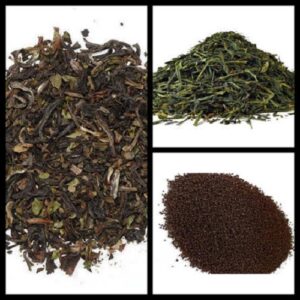Makhana Export From India
Harsh Dhawan Export Experts Global Makhana Export From India How to Export From India ? Makhana Export From India,..
In India, tea is one of the most well-known products. India produces some of the world’s best teas. India supplies the majority of the world’s tea imports. Tea is grown, processed, traded, and exported, resulting in a well-organized business. The Indian tea industry employs a large number of people and is profitable because it matches worldwide demand.

Tea has received special attention from the Indian government. The Tea Board of India is a government organisation that works in all aspects of the tea value chain in India, from cultivation to end-user consumption.
According to ITC data, India exported $763 million worth of tea in the fiscal year 2018-19. Despite its high starting point, the trade has grown at a rate of 5% per year from 2014 to 2018. India is the world’s second-largest producer and exporter of tea.
Tea export from India is a major source of revenue for many Indian tea producers.
Tea export from India: A Beginner’s Guide Documents and registrations that are required
The following registrations are required for exporting tea from India:
An individual who wants to start a tea export business has to secure this paperwork in order to get started.
Once all of the registrations are complete, potential tea buyers or importers in the target country can be contacted. Tea providers send a sample of the tea (s) to the buyer once the buyers have been selected and conversations have begun.

The process of sending the tea sample via courier is quite important, as most courier companies will not accept loose tea as a shipment without papers.
The following documentation must be provided in order to send a tea sample via courier from India:
When the shipment arrives at the port of the importing country, it must comply with the country’s import regulations. Some countries, such as Germany, the Netherlands, and the United States, have particularly strict food import regulations.
Tea exporters from India are encouraged to obtain a COA (Certificate of Analysis) or laboratory testing from a NABL accredited facility in India to prevent rejection. These typically involve nutrient content, heavy metals, microbiological analysis, and residue levels, among other things. The MRL (Maximum Residue Level) is the most important criterion for accepting or rejecting tea shipments from India.
Prior to shipment from India, the findings of laboratory tests should be discussed with the buyer. The cargo should only be loaded after obtaining the buyer’s consent.
Tea suppliers from India are currently attempting to expand their presence beyond traditional markets such as Russia, the United Arab Emirates, and the United States to new regions in Europe such as the Czech Republic, Poland, and the Baltic nations by meeting these criteria.
Following the quality requirements to the letter will ensure that the buyer is satisfied and that only the best goods reach foreign ports, resulting in long-term recurring business.
Harsh Dhawan Export Experts Global Makhana Export From India How to Export From India ? Makhana Export From India,..
Top 10 Imports of India Export Experts Global In 2020-21, India imported $388.92 billion worth of goods and services,..
Export Experts Global What Is MSME? What Is MSME? MSME Registration? MSME Certificate? India has begun to build laws..
